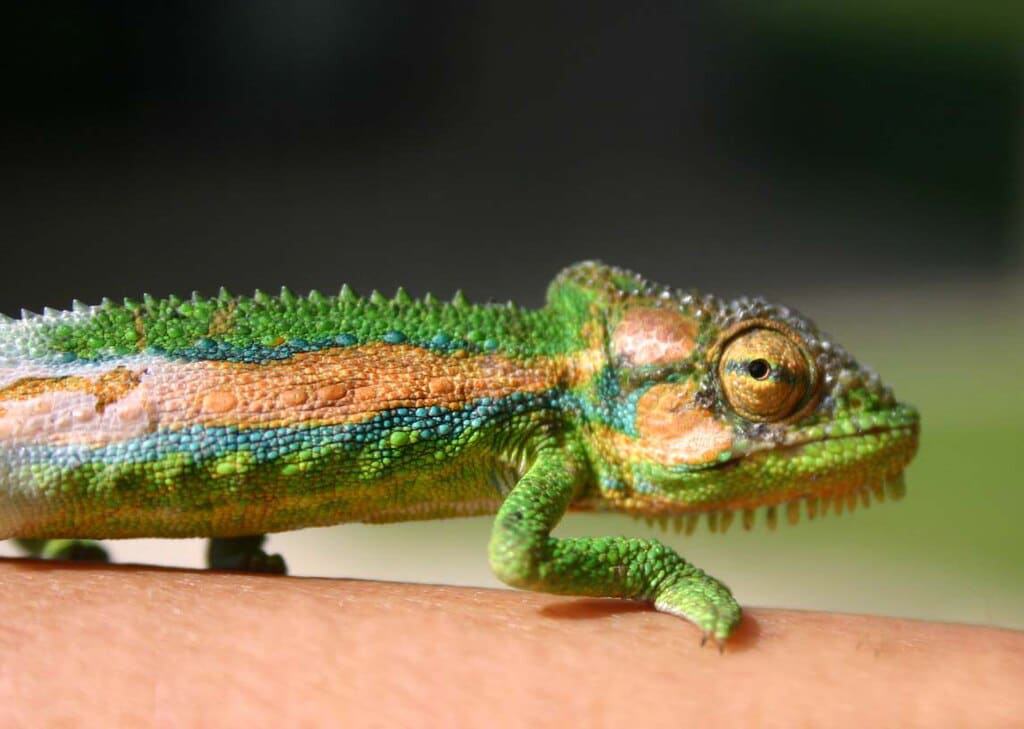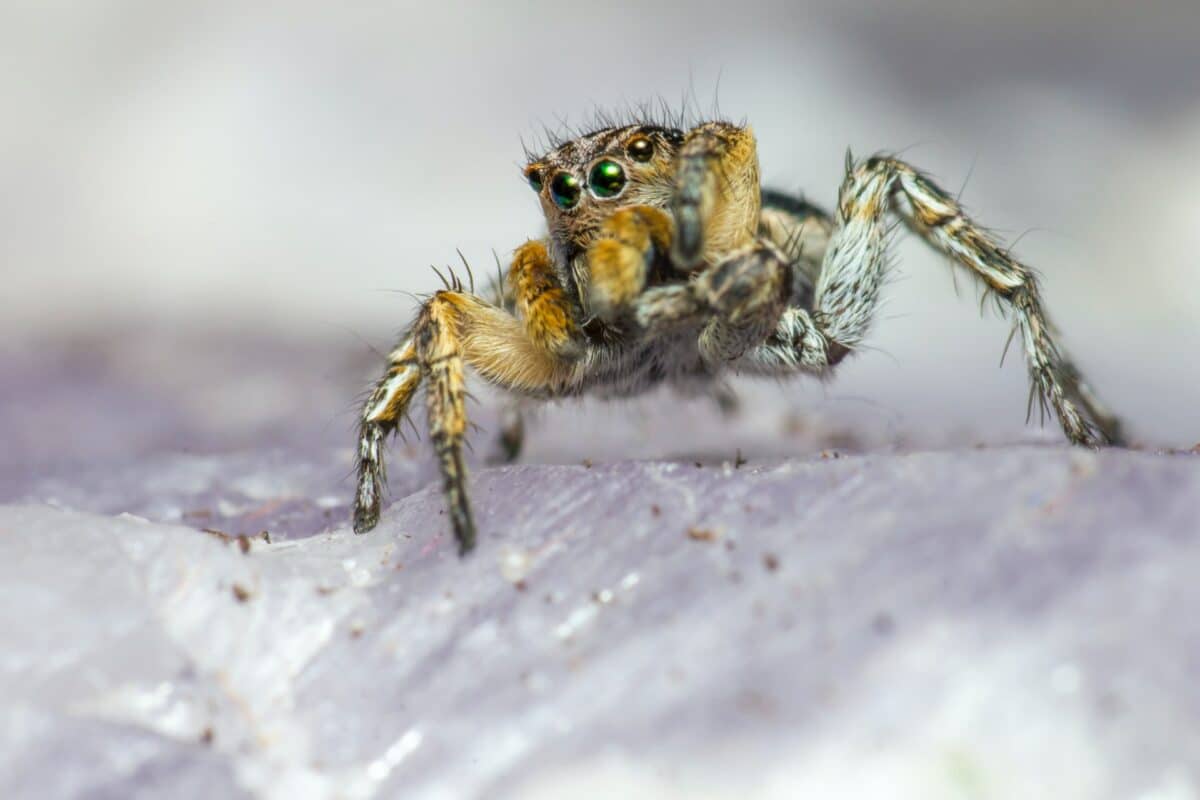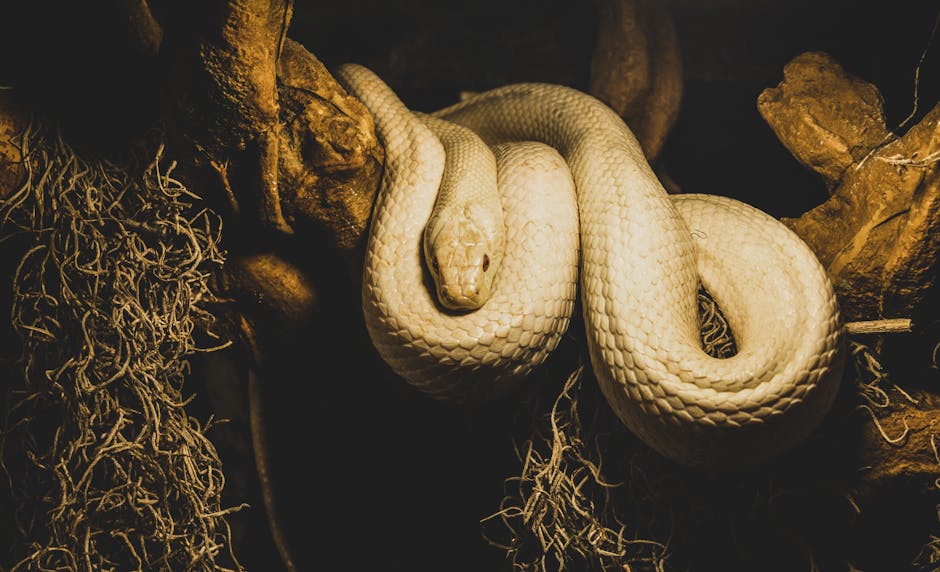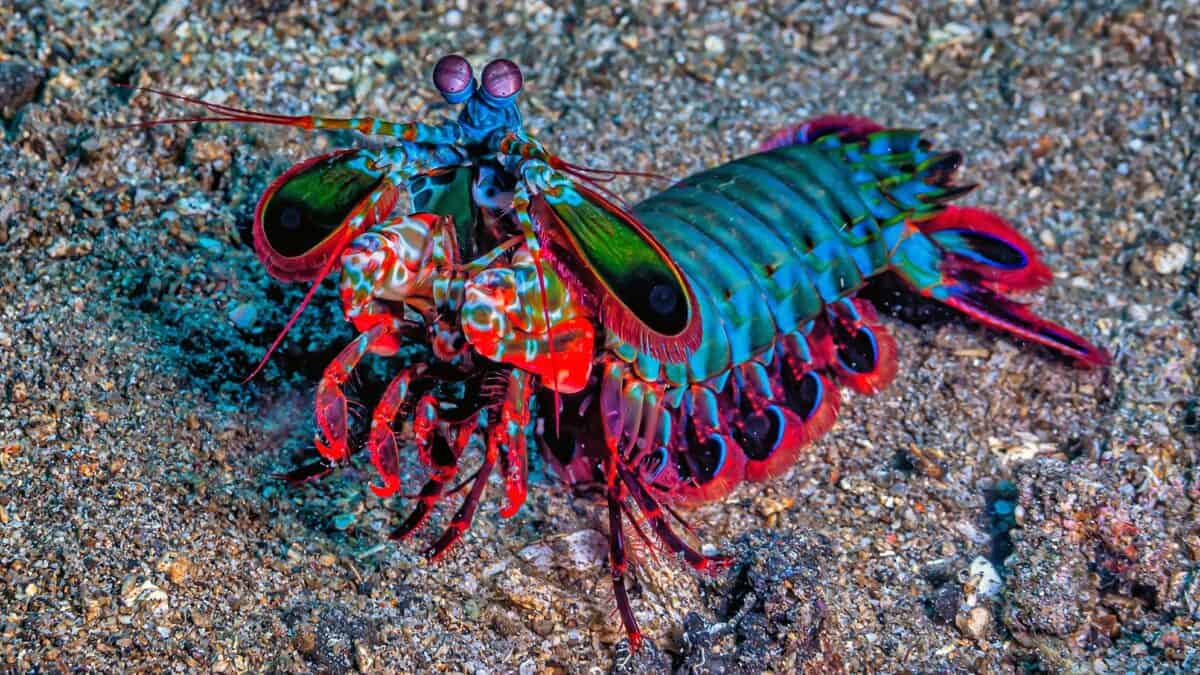The animal kingdom is full of creatures with visual abilities that seem like superpowers compared to our human sight. While we marvel at our visual capabilities, many animals perceive the world in ways that would be completely alien to us. From seeing ultraviolet light to having eyes on stalks, animal vision is diverse, fascinating, and often mind-boggling. Let’s dive into some truly wild facts about how animals see the world around them – prepare to have your mind blown!
14. Mantis Shrimp The Visual Superheroes of the Ocean

If humans are proud of our three color-detecting cones, the mantis shrimp will make you feel woefully inadequate. These underwater marvels possess up to 16 different types of photoreceptor cells (compared to our measly three). This allows them to perceive ultraviolet, infrared, and polarized light. Scientists believe mantis shrimp can see up to 100,000 colors – that’s about 10 times more than humans can perceive! Their eyes sit on mobile stalks and can move independently, giving them stereoscopic vision despite being just a few inches long. Perhaps most remarkably, mantis shrimp process visual information directly in their eyes rather than their brain, making their visual reaction time among the fastest in the animal kingdom, perfect for their lightning-quick hunting strikes.
13. Butterflies Can See Colors We Can’t Even Imagine

Butterflies perceive the world through a kaleidoscope of colors that humans cannot comprehend. Most butterfly species have at least five different color receptors (compared to our three), and some have as many as fifteen. This means they can see ultraviolet patterns on flowers that guide them to nectar, patterns completely invisible to the human eye. These patterns act as “landing strips” or “nectar guides” that lead butterflies directly to food sources. Even more fascinating, many butterflies have compound eyes containing thousands of individual lenses, giving them nearly 360-degree vision and the ability to detect the slightest movement. Their vision is so specialized that some species can distinguish between male and female butterflies based solely on UV patterns on their wings that humans cannot perceive without special equipment.
12. Eagles Could Read a Newspaper From a Football Field Away

The phrase “eagle-eyed” isn’t just a figure of speech. Eagles possess visual acuity estimated to be 4 to 8 times stronger than humans. This means an eagle could spot a rabbit from about two miles away or, theoretically, read a newspaper headline from across a football field. This remarkable vision comes from several adaptations: their eyes are enormous relative to their head size, they have more light-sensitive cells (photoreceptors) in their retinas, and they possess a specialized fovea (the area responsible for sharp central vision) with five times more cells than humans. Additionally, eagles can rapidly zoom their vision like a camera lens by changing the shape of their eyes or moving their head. Perhaps most impressively, they have two foveae in each eye – one for looking forward and one for looking sideways – allowing for incredible precision when diving toward prey at speeds exceeding 150 mph.
11. Chameleons Have Independently Rotating Turret Eyes

Chameleons possess some of the most unusual eyes in the animal kingdom. Each eye can rotate and focus independently, giving these reptiles a 360-degree field of vision without moving their heads. This means they can watch for predators with one eye while simultaneously hunting for insects with the other! Their eyes can swivel almost completely around, and when a chameleon spots potential prey, both eyes can focus on the same point to give precise depth perception before striking. Their eyelids are fused except for a small pinhole opening, and when they sleep, they close this tiny aperture like camera shutters. Even more remarkably, chameleon eyes contain a negative lens that allows them to magnify what they see up to 15 times, creating a telephoto effect. This combination of features makes chameleons visual specialists that would make any surveillance expert jealous.
10. Goats Have Rectangular Pupils for 320-Degree Vision

If you’ve ever looked closely at a goat’s eyes, you might have noticed something unusual – their pupils are rectangular, not round. This bizarre adaptation gives goats approximately 320-330 degrees of vision, allowing them to see almost everything around them without turning their heads. This near-panoramic sight evolved as a defensive mechanism, helping prey animals detect predators approaching from almost any direction. The horizontal orientation of their rectangular pupils also helps goats maintain clear vision along the ground while grazing. Research shows these rectangular pupils are particularly good at receiving light from the front, sides, and above while limiting bright light from the sun overhead. Even more interesting, goats’ eyes barely need to move in their sockets, and when they do sleep, they often keep one eye partially open to maintain vigilance against potential threats!
9. Scallops Have Up to 200 Eyes That Work Like Telescopes

Scallops might seem like simple creatures, but their visual system is astonishingly complex. These bivalve mollusks possess between 50 and 200 tiny eyes arranged along the edge of their mantle. Each eye contains a tiny mirror made of crystals that focuses light onto two retinas, functioning more like a telescope than a camera. This unique arrangement allows scallops to form reasonably clear images despite having no brain to process visual information. Scientists have discovered that their eyes contain a spatial arrangement of retinal cells that helps the scallop determine if something is moving toward it, triggering its escape response. Most remarkably, these crystal mirrors in scallop eyes are made of guanine – the same compound found in DNA – and are arranged so perfectly that human engineers are studying them to develop better optical devices. Despite having hundreds of eyes, scallops primarily use their vision to detect changes in light and motion rather than to form detailed images of their surroundings.
8. Dragonflies Process Light in Slow Motion

Dragonflies possess perhaps the most sophisticated insect vision on Earth. Their massive compound eyes contain up to 30,000 individual lenses, covering almost their entire head and giving them 360-degree vision. However, what’s truly mind-blowing is that dragonflies perceive light at an astonishing rate – their flicker fusion rate (the speed at which consecutive images appear as continuous motion) is far superior to ours. While humans process about 60 images per second, dragonflies can process up to 200 frames per second, essentially seeing the world in slow motion. This incredible visual processing power allows them to react to movements in just 50 milliseconds, helping them catch prey mid-air with an over 95% success rate – the highest hunting success rate in the animal kingdom. Their compound eyes are also specialized, with the upper portion detecting polarized light patterns that help with navigation, while the lower portion specializes in detecting movement against varied backgrounds.
7. Jumping Spiders Have Better Color Vision Than Most Mammals

Despite their tiny size, jumping spiders possess remarkable vision that outperforms most mammals. While many spiders have eight simple eyes, jumping spiders have four pairs of eyes arranged to give them nearly 360-degree vision. Their two large central eyes provide color vision and depth perception that rivals primates, despite their brain being smaller than a poppy seed. Research has shown they can see across a broader spectrum than humans, including ultraviolet light. These spiders’ eyes contain four-layer retinas (compared to our single layer), allowing them to perceive depth with fantastic accuracy. This is crucial for their hunting technique – they don’t build webs but instead stalk and pounce on prey with precision jumps up to 50 times their body length. Perhaps most fascinating, jumping spiders will often perform “scanning” movements with their bodies, not because they’re being cute, but because they’re actively building three-dimensional maps of their environment with their highly developed visual system.
6. Snakes Can “See” Heat Through Their Facial Pits

Some snake species, particularly pit vipers, boas, and pythons, possess a type of vision that humans can barely comprehend – infrared vision. These snakes have specialized heat-sensing organs called pit organs located between their eyes and nostrils. These pits can detect infrared radiation (heat) emitted by warm-blooded prey, essentially allowing snakes to “see” heat signatures in complete darkness. The pit organs are so sensitive that they can detect temperature differences as small as 0.003°C and can locate warm prey from over a meter away. Remarkably, these organs create a separate infrared “image” that the snake’s brain overlays with visual information from its eyes, creating a combined picture that helps them strike with astonishing accuracy. This thermal vision is particularly useful for hunting warm-blooded mammals and birds at night when visual cues would be limited. Research has shown the infrared receptors in pit organs evolved from the same genes that produce temperature-sensitive channels in pain-sensing neurons in other vertebrates – nature repurposed existing genetic material to create an entirely new sense!
5. Cuttlefish Can See Polarized Light and Change Their Skin Pattern Accordingly

Cuttlefish possess one of the most sophisticated visual systems in the animal kingdom. Despite being colorblind in the traditional sense (they have only one type of photoreceptor), they can perceive polarized light – a visual dimension completely invisible to humans. Polarized light refers to light waves that vibrate in a single plane, and cuttlefish can detect subtle differences in how light is polarized to gain information about their environment. Even more remarkable, cuttlefish can change their skin pattern, texture, and color in a fraction of a second to match their surroundings or communicate with other cuttlefish. Their skin contains specialized cells called chromatophores, iridophores, and leucophores that can expand or contract to create complex patterns. Research has shown that cuttlefish can even create different patterns on different sides of their body simultaneously, showing one pattern to a potential mate on one side while displaying a camouflage pattern to a predator on the other side! This combination of polarized vision and dynamic skin makes cuttlefish masters of visual deception.
4. Owls Can’t Move Their Eyes – They Rotate Their Entire Heads Instead

Owls have developed one of the strangest visual adaptations in the animal kingdom. Unlike humans, who can move their eyes to look around, owls’ eyes are fixed in their sockets – they cannot move them at all. To compensate, owls have evolved the ability to rotate their heads up to 270 degrees (three-quarters of a circle) in either direction. This remarkable flexibility is made possible by specialized blood vessels at the base of their neck that expand to collect blood when normal circulation is cut off during extreme head rotation. Their eyes are also enormous relative to their skull – if human eyes were proportionally the same size as owl eyes, they would be as large as grapefruits! These enormous tubular eyes give owls extraordinary light-gathering abilities, allowing them to see in light levels up to 100 times dimmer than what humans require. Their exceptional night vision comes with a trade-off, though – owls are farsighted and cannot focus clearly on objects within a few centimeters of their eyes. To examine things up close, they use small filoplumes (hairlike feathers) around their beak that function somewhat like whiskers.
3. Dogs See Fewer Colors But Detect Motion Better Than Humans

Our canine companions see the world quite differently from how we do. Dogs possess only two types of color-detecting cone cells (compared to humans’ three), meaning they see primarily in blue and yellow – their world resembles what humans with red-green colorblindness experience. This explains why your dog might seem indifferent to that bright red ball on green grass – to them, both objects appear as similar yellowish shades. However, what dogs lack in color perception, they make up for with other visual specialties. Dogs have more motion-sensitive cells (rods) in their retinas, allowing them to detect movement up to 10-20 times better than humans. They also have superior night vision, needing only about 25% of the light humans require to navigate in darkness. Additionally, dogs have a wider field of vision – about 240 degrees compared to our 180 degrees – though they have less binocular overlap and therefore slightly poorer depth perception than humans. These visual adaptations made perfect sense for their wolf ancestors, who needed to detect prey movement at dawn and dusk when hunting.
2. Birds Can See Magnetic Fields Thanks to Quantum Physics

Migratory birds perform one of nature’s most impressive feats – navigating thousands of miles with pinpoint accuracy during migrations. One key to this ability is that many bird species can literally see Earth’s magnetic field, thanks to a protein called cryptochrome in their eyes. When blue light hits this protein, it creates pairs of free radicals (molecules with unpaired electrons) whose spins are affected by Earth’s magnetic field through a quantum mechanical process called the radical pair mechanism. This creates a pattern superimposed on the bird’s visual field, essentially allowing them to “see” magnetic north. Scientists believe birds perceive these magnetic fields as light or dark patterns overlaid on their normal vision, similar to how pilots use head-up displays. This magnetic vision works alongside other navigational tools like star positions, landmarks, and smell. Research has shown that European robins with eye patches couldn’t navigate properly. However, birds with patches over their upper beaks (where magnetite, another magnetic sensor, is located) could still navigate, confirming that this visual magnetic sense is crucial for migration. This quantum biology phenomenon represents one of the few known cases where quantum effects directly influence animal behavior.
1. Swordfish Heat Their Eyes to Improve Vision During Deep Dives

Swordfish have evolved one of the most unusual visual adaptations ever discovered – they literally warm their eyes and brain to improve vision when hunting in cold, deep waters. Specialized heat-producing tissue near their eyes, developed from eye muscles, can raise the temperature of their eyes and brain to 10-15°C above the surrounding water temperature. This remarkable adaptation prevents their retinas from becoming sluggish in frigid deep waters, maintaining rapid visual processing even at depths exceeding 2,000 feet. Warmer eyes also improve visual acuity and help swordfish detect the subtle movements and bioluminescence of their prey in near-darkness. The specialized tissue that generates this heat contains numerous mitochondria (cellular powerhouses) and is well-supplied with oxygen-rich blood, allowing sustained heat production during deep dives. This “brain heater” represents one of the most sophisticated thermal regulation systems found in any fish species. By maintaining warm eyes in cold environments, swordfish gain a significant predatory advantage, helping them become one of the ocean’s most successful hunters despite diving into environments where vision should be severely compromised.
Conclusion

The animal kingdom’s diverse visual adaptations remind us that our human perspective represents just one way of perceiving the world. From mantis shrimp with their 16 photoreceptors to birds that can see magnetic fields, nature has developed visual systems perfectly tailored to each species’ unique ecological niche. These extraordinary adaptations not only help us appreciate the remarkable diversity of life on Earth but also inspire innovations in fields ranging from optics to robotics. Next time you look an animal in the eye, remember – they might be seeing a world entirely different from the one you perceive, rich with colors, patterns, and visual dimensions that human minds can barely comprehend.
- 11 Dog Breeds That Rarely Bark - August 22, 2025
- 13 Wild Animals That Only Come Out at Night - August 22, 2025
- 15 Strangest Animal Feeding Habits - August 22, 2025

